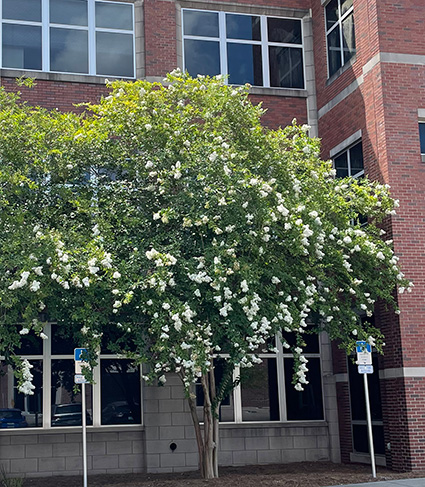Crapemyrtle

A highly popular plant in the Southeast, the crapemyrtle produces dazzling blooms all summer long and is well-adapted to both heat and drought. And during the winter months, the bark of these shrubs and small trees can add interest to any landscape.
Selection
You’re sure to find a crapemytle that’s right for your yard. These versatile shrubs come in range of shapes and sizes, from dwarf varieties that reach less than four feet to tree-sized varieties that can grow to more than twenty feet.
Start by thinking about how much space you have and what flower color you want. It’s also smart to choose a disease-resistant cultivar that’s known to perform well in Florida.
For small spaces, try a dwarf or semi-dwarf cultivar. ‘Chickasaw’ creates a dense, three-foot bush covered with lavender-pink flowers. ‘Acoma’ is a white-flowering cultivar that has beautiful, weeping branches and reaches just over 10 feet tall. It’s also resistant to powdery mildew.
If you have more space, try growing ‘Comanche’, a coral flowering intermediate cultivar that grows 20 feet tall, or ‘Miami’, a 35-foot-tall selection that produces dark pink flowers.
Care
Crapemyrtles perform best when they receive full sun. Newly planted crapemyrtles should be irrigated regularly for the first few weeks. Once established, these plants are extremely drought tolerant and have low fertility requirements, though they respond to fertilizer and water with lush growth.
Contrary to popular belief, crapemyrtles do not require much pruning. Remove any poorly placed limbs as needed, but avoid what is commonly known as “crape murder.” Learn more about proper pruning techniques in our article “Pruning Crapemyrtles.”
For more information on crapemyrtles, contact your county Extension office.
